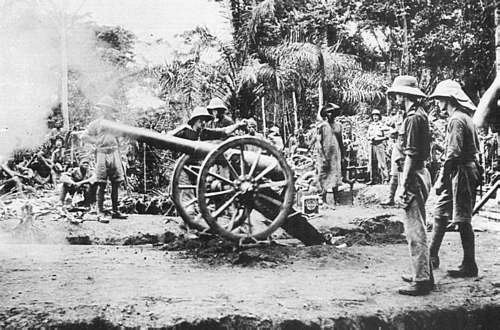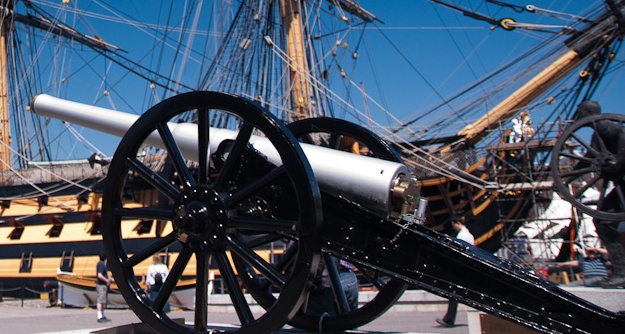QF 12-pounder 8 Cwt Gun on:
[Wikipedia]
[Google]
[Amazon]
The Ordnance QF 12-pounder 8 cwt was a

 These guns were employed on land in the West Africa campaign. They were also employed in the East Africa campaign ("Logan's Battery" 6th Field Battery, 2 guns, towed first by
These guns were employed on land in the West Africa campaign. They were also employed in the East Africa campaign ("Logan's Battery" 6th Field Battery, 2 guns, towed first by
 There is a surviving example held and maintained at Devonport Field Gun Association Heritage Centre & Museum at Crownhill Fort, Plymouth. There are also three examples at the Royal Canadian Sea Cadets summer training camp at HMCS Acadia in Cornwallis, Nova Scotia. They still fired regularly, although they only fire blanks for ceremonial and training purposes. One example is located at HMCS ''Star'' i
There is a surviving example held and maintained at Devonport Field Gun Association Heritage Centre & Museum at Crownhill Fort, Plymouth. There are also three examples at the Royal Canadian Sea Cadets summer training camp at HMCS Acadia in Cornwallis, Nova Scotia. They still fired regularly, although they only fire blanks for ceremonial and training purposes. One example is located at HMCS ''Star'' i
Text Book of Gunnery, 1902. LONDON : PRINTED FOR HIS MAJESTY'S STATIONERY OFFICE, BY HARRISON AND SONS, ST. MARTIN'S LANE
* Dale Clarke
British Artillery 1914–1919. Field Army Artillery. Osprey Publishing, Oxford UK, 2004
* General Sir Martin Farndale, History of the Royal Regiment of Artillery : Forgotten Fronts and the Home Base 1914–18. Royal Artillery Institution, London, 1988. * * Major Darrell Hall
"Guns in South Africa 1899–1902 Part III and IV" The South African Military History Society Military History Journal – Vol 2 No 2, December 1971
* Major Darrell Hall
For access to view the surviving example
{{DEFAULTSORT:QF 12-pounder 08 cwt Artillery of the United Kingdom World War I artillery of the United Kingdom 76 mm artillery Naval guns of the United Kingdom World War I naval weapons of the United Kingdom
Royal Navy
The Royal Navy (RN) is the United Kingdom's naval warfare force. Although warships were used by English and Scottish kings from the early medieval period, the first major maritime engagements were fought in the Hundred Years' War against ...
"landing gun" intended for navy use ashore. "8 cwt" refers to the weight of the gun and breech, approximately 8 cwt = 8 x = . This was how the British often differentiated between guns of the same calibre or weight of shell. This gun had a short barrel and was of relatively low power compared to the 12 pounders of , although it fired the same shells.
History
Fourteen were converted into anti-aircraft guns as Mk I*. The Royal Navy eventually replaced the gun with the mountain howitzer.Clarke 2004, page 40Combat use
Second Boer War
The gun was used in the early stages of theSecond Boer War
The Second Boer War ( af, Tweede Vryheidsoorlog, , 11 October 189931 May 1902), also known as the Boer War, the Anglo–Boer War, or the South African War, was a conflict fought between the British Empire and the two Boer Republics (the South ...
in Natal.
World War I

 These guns were employed on land in the West Africa campaign. They were also employed in the East Africa campaign ("Logan's Battery" 6th Field Battery, 2 guns, towed first by
These guns were employed on land in the West Africa campaign. They were also employed in the East Africa campaign ("Logan's Battery" 6th Field Battery, 2 guns, towed first by Hupmobile
Hupmobile was an automobile built from 1909 through 1939 by the Hupp Motor Car Company of Detroit. The prototype was developed in 1908.
History
Founding
In 1909, Bobby Hupp co-founded Hupp Motor Car Company, with Charles Hastings, for ...
cars and then REO lorries).
This gun was briefly used in the Battle of Gallipoli, as the Royal Navy had supplies of ammunition for it when the army was short of ammunition for its own guns. Several guns were landed in July 1915 and operated from frontline trenches.Clarke 2004, page 40
Surviving examples
 There is a surviving example held and maintained at Devonport Field Gun Association Heritage Centre & Museum at Crownhill Fort, Plymouth. There are also three examples at the Royal Canadian Sea Cadets summer training camp at HMCS Acadia in Cornwallis, Nova Scotia. They still fired regularly, although they only fire blanks for ceremonial and training purposes. One example is located at HMCS ''Star'' i
There is a surviving example held and maintained at Devonport Field Gun Association Heritage Centre & Museum at Crownhill Fort, Plymouth. There are also three examples at the Royal Canadian Sea Cadets summer training camp at HMCS Acadia in Cornwallis, Nova Scotia. They still fired regularly, although they only fire blanks for ceremonial and training purposes. One example is located at HMCS ''Star'' iSee also
This cannon is the type used in the famous British Royal Navy Field Gun Runs.In popular culture
The RN Field Gun may be seen 'in action' in the 1957 film "Yangtse Incident", when a group of these guns was used on the banks of the River Orwell to depict ChinesePLA
PLA may refer to:
Organizations Politics and military
* People's Liberation Army, the armed forces of China and of the ruling Chinese Communist Party
* People's Liberation Army (disambiguation)
** Irish National Liberation Army, formerly called ...
gun batteries on the North bank of the Yangtze, which fired on as she steamed up to Nanking in April 1949.
Notes and references
Bibliography
Text Book of Gunnery, 1902. LONDON : PRINTED FOR HIS MAJESTY'S STATIONERY OFFICE, BY HARRISON AND SONS, ST. MARTIN'S LANE
* Dale Clarke
British Artillery 1914–1919. Field Army Artillery. Osprey Publishing, Oxford UK, 2004
* General Sir Martin Farndale, History of the Royal Regiment of Artillery : Forgotten Fronts and the Home Base 1914–18. Royal Artillery Institution, London, 1988. * * Major Darrell Hall
"Guns in South Africa 1899–1902 Part III and IV" The South African Military History Society Military History Journal – Vol 2 No 2, December 1971
* Major Darrell Hall
External links
* ttps://www.youtube.com/watch?v=HTBPn8oAxYA YouTube ''Running with 3/4 Soddin Ton!RN team practice with QF 12 pdr for Navy Gun RunFor access to view the surviving example
{{DEFAULTSORT:QF 12-pounder 08 cwt Artillery of the United Kingdom World War I artillery of the United Kingdom 76 mm artillery Naval guns of the United Kingdom World War I naval weapons of the United Kingdom